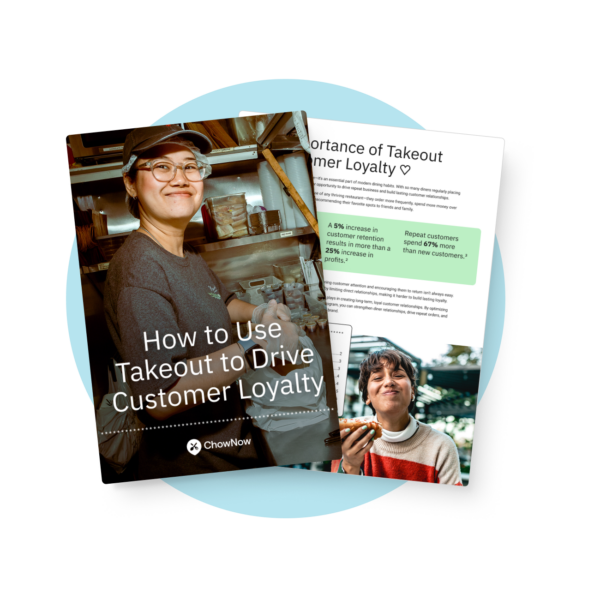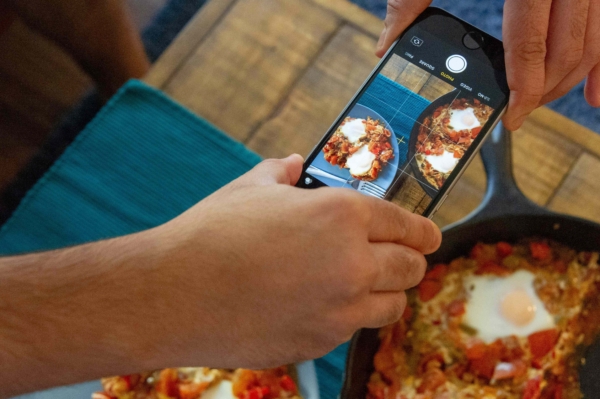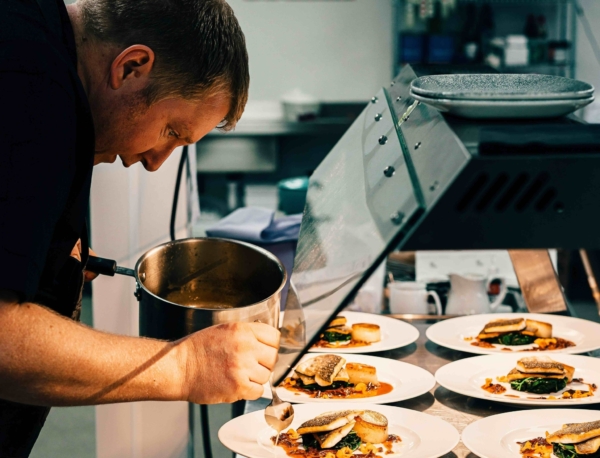Restaurant Menu Pricing: How to Set Prices That Boost Profits And Keep Customers

Menu pricing isn’t just about covering costs—it’s about finding that sweet spot where profitability, customer perception, and operational reality meet.
Set prices too low, and you’re leaving money on the table.
Too high, and you’ll drive customers away.
Somewhere in between is the number that makes sense for your food costs, your market, and your restaurant’s unique position.
In this article, you’ll learn:
- How to factor in costs, competition, and customer expectations
- Which pricing strategies work in a real-world restaurant setting
- How to test and tweak prices without losing loyal guests
Let’s get started so you can make smarter pricing decisions that support both your bottom line and your guest experience.
Understanding the Key Factors in Menu Pricing
Before you develop your menu pricing strategies, it’s important to ground your decisions in the numbers.
Menu pricing shouldn’t be a guessing game—it should reflect the real costs of running your restaurant, what your guests are willing to pay, and where you stand in the local market.
Food Costs: How to calculate the cost of each dish
Let’s start with the basics: how much does it actually cost you to make each item on your menu?
This is known as “plate cost,” and it includes every raw ingredient that goes into a dish, down to the garnishes and sauces.
For example, if you’re serving a burger, you’re not just tallying up the beef and bun—you’re also including the pickles, onion, aioli/mayo, cheese, lettuce, and even the side of fries.
Most operators aim for food costs to be around 28-35% of the menu price, though this can change from restaurant to restaurant.
For example, let’s say the burger we were talking about costs you $3 in ingredients to make, and you want a 30% food cost; you’d set the menu price at $10.
Your concept will play a factor in determining your goal food cost percentage.
High-end restaurants can charge more for the experience, leaving wiggle room for a higher food cost percentage. Fast-casual spots usually don’t have that luxury, so pricing needs to be tighter and more dialled in.
Overhead and Labor Costs: Factoring operational expenses
Food isn’t your only expense.
To conduct menu pricing profitably, you need to factor in the behind-the-scenes costs that keep your doors open—that includes rent, utilities, insurance, labor, cleaning supplies, linen, and everything in between.
One approach is to use a contribution margin model: after you’ve calculated food cost, ask yourself how much money is left from the sale of a menu item to cover everything else.
If a menu item such as a $14 pasta dish costs $4 to make, you’ve got $10 left to contribute to overhead and labor. If that’s not enough to cover the bills, your menu pricing may need an adjustment.
One way to offset costs and give you more breathing room for pricing is by encouraging guests to place orders through direct website ordering. This allows you to avoid paying the 25-30% third-party commission fees and keep more revenue in-house.
Market Demand and Customer Expectations: Menu pricing based on restaurant type and audience
Who are your customers, and what do they expect when they walk in the door?
Menu pricing has a lot to do with perception.
A $16 sandwich might feel like a splurge at a deli, but totally reasonable at a trendy café that sources local, organic ingredients and has a curated vibe.
Look at what your audience values and price accordingly.
Are you the affordable neighborhood staple? The special-occasion spot? The convenient grab-and-go lunch place?
Your menu pricing needs to match the experience you’re offering—and what your customers are willing to pay for it. Effective restaurant menu pricing strategy takes into account customer expectations and market positioning to ensure both profitability and customer satisfaction. If you charge more than customers expect, the value has to be obvious—whether it’s in quality, presentation, or experience.
Competitor Pricing: When to benchmark against competitors and when to ignore them
It’s tempting to just look at what the restaurant down the block is charging and price your menu accordingly. But that’s only part of the picture.
Yes, competitor pricing can give you a ballpark idea of what customers in your area expect to pay—but it shouldn’t be your only reference point. You don’t know their food costs, rent, or labor volume.
Use competitor pricing to contextualize your menu, not to copy it. Understanding various pricing methods can help you better position your menu items against competitors and ensure competitive pricing. If your food quality, service, or ambiance is better (or different), your prices should reflect that.
At the end of the day, pricing based solely on your competition can put you in a race to the bottom—and that’s not where you want to be.
Popular Menu Pricing Strategies
Once you understand your costs and your market, you can start thinking about how you price. Choosing the right menu pricing method is crucial for setting prices that align with your business goals and customer expectations.
There’s no one-size-fits-all approach, but there are a few tried-and-true strategies that can help you land on prices that feel right for both your business and your guests.
Cost-Plus Pricing: Simple, but not always strategic
This is the classic method. You take your total food cost for a dish, add a markup (often 3x the cost), and set your price.
For example, if your fish taco plate costs you $5 to make, you might price it at $15.
Cost-plus pricing is a good baseline and makes sure you’re not losing money—but it doesn’t account for guest perception, competition, or your broader brand strategy.
Cost-plus pricing is a useful starting point, but it shouldn’t be the only pricing method in your game plan.
Value-Based Pricing: Charging based on perceived value rather than just cost
This approach flips the script. Instead of starting with your costs, you start with the value of the dish to the customer.
What experience are they buying? What are they willing to pay for it?
If you’re selling a $16 mac and cheese, but it includes truffle oil and house-made pasta, customers might feel it’s worth every penny. That perceived value gives you room to charge more—without turning people away. The selling price should reflect the perceived value to ensure customers feel they are getting their money’s worth.
And value doesn’t stop at the plate.
If your food quality, service, and overall experience stand out—including things like a sleek restaurant website that makes ordering easy—it all contributes to an elevated experience.
People are often willing to pay more when your brand feels polished and intentional from start to finish.
Value-based pricing requires more thought, but when it’s done right, it aligns your pricing with your identity and what your guests care about.
Competitive Pricing: Matching or undercutting competitors
Looking at what similar restaurants in your area are charging can help you stay in range, especially if you’re in a price-sensitive market. But blindly matching (or undercutting) your competitors can be risky.
If your competitor has lower prices because they’re cutting corners on quality or service, chasing their numbers might hurt you in the long run.
Competitive pricing is helpful as a reference, not a roadmap. A well-thought-out restaurant pricing strategy can help you effectively compete in the market while maintaining profitability.
Instead, figure out where you stand in the local landscape and price accordingly.
Are you faster? Better? More convenient?
For example, if your restaurant offers a seamless experience through a branded mobile app that allows for quick pick-up, this adds value. People will pay a little more for the convenience.
Psychological Pricing: Small adjustments that can change customer perceptions
Sometimes, how a price looks matters more than what it is. That’s why you often see menu prices such as $9.99—it works.
Small pricing tweaks can shape how guests perceive your value, even if the actual difference is minimal.
Here are a few psychological pricing techniques that can work for restaurants:
- Charm pricing: $12.95 feels cheaper than $13, even if it’s just five cents.
- Price anchoring: Place a high-ticket item next to mid-range dishes to make them feel more affordable.
- Menu design: Use layout and typography to draw attention to higher-margin items (and downplay the most expensive ones).
- Avoid dollar signs: Some studies suggest removing dollar signs can make guests less price-conscious.
These small psychological cues can make a surprisingly big impact.
Effectively pricing menu items using psychological techniques can significantly influence customer perceptions and sales.
How to Test and Optimize Your Pricing
Menu pricing isn’t a “set it and forget it” scenario.
Even after you’ve put a lot of thought and effort into setting your prices, the true revelation happens when you test, adjust, and track how your prices perform in the real world.
Tracking Sales and Profit Margins: Watching the numbers over time
Once your menu is live for a few weeks, it’s time to pull back and look at what’s selling, then crunch the numbers to see how profitable those numbers are.
High sales volume doesn’t always equal a high profit margin. Maybe your best-seller only gains you $2 a plate, while a slower-moving entree earns you $7 an order—that’s valuable information.
Look for patterns over time.
Which items are pulling their weight? Which ones might need a price bump or even a redesign?
Use both sales data and margin analysis to steer your next moves, not just your instincts.
Using Data from POS: Leverage technology to refine your pricing
Your POS is a goldmine of pricing insights—use it.
Most modern systems can break down sales by menu items and track changes over time.
Some platforms (like ChowNow’s Centralized Reporting) can also help you track online orders separately, which is key if your to-go and dine-in audiences behave differently.
The more you dig into the data, the easier it is to spot underperformers, pricing mismatches, and hidden opportunities.
Experimenting with Small Adjustments: How slight price changes can make a big impact.
The idea of changing menu prices can feel risky—but it doesn’t have to be an all-or-nothing move.
Start small. Raise the menu price of one item by 25 to 50 cents and see how it performs. Move a dish to a more prominent spot on the menu and track if sales go up.
Even subtle menu pricing tweaks can have a meaningful impact—especially when you multiply that change across hundreds or thousands of orders.
The key is to test one variable at a time, give it enough runway to collect real data, and adjust based on what actually happens—not just what you assume. Adjusting menu prices based on your target food cost percentage can help ensure profitability while making incremental changes.
Common Menu Pricing Mistakes to Avoid
Even when you’ve done your homework, menu pricing can go sideways if you’re not careful. Here are a few of the most common missteps—and how to stay ahead of them. A well-defined restaurant pricing strategy can help you avoid common pitfalls and ensure your pricing remains effective.
Underpricing or overpricing menu items and how to find the right balance
If your prices are too low, you might fill seats but still struggle to turn a profit.
Too high, and guests may start skipping their usual order—or skipping your place altogether.
The sweet spot is somewhere in between: where your prices cover costs, reflect value, and still feel fair to your guests.
Finding that balance when pricing menu items takes both math and instinct.
Look at your food and labor costs, yes—but also think about how your prices land in the context of your brand, your competitors, and your guest expectations.
A $14 salad can feel overpriced or a treat, depending on how it’s positioned.
Ignoring the Impact of Inflation and Rising Costs
Your supplier prices go up. Labor rates shift. Rent increases.
If you’re not adjusting for inflation and rising expenses, you’re slowly shrinking your margins—even if your sales look solid on paper. Regularly reviewing your ideal food cost percentage can help you make necessary price adjustments to maintain profitability.
This doesn’t mean you need to raise prices every month. But it does mean you should regularly review your menu and assess whether your pricing still makes sense based on your current costs.
Remember, guests are generally more understanding of modest price increases when they’re paired with quality and consistency.
Failing to Adjust Prices Over Time: Why menu pricing should never be static.
Too many operators set their prices once and forget them. But your menu is a living thing—it should evolve as your costs, guest preferences, and market change. A dynamic restaurant pricing strategy involves regular reviews and adjustments to ensure prices remain competitive and profitable.
Maybe a dish that used to fly off the menu has slowed down, or the food cost on your best seller has quietly crept up.
If you’re not reviewing performance regularly, those details slip through the cracks.
Schedule regular pricing reviews—even just quarterly—and make small adjustments as needed.
Not only will this keep your margins healthy, but incremental changes make it easier for customers to accept than significant price jumps once every one or two years.
Set Prices with Confidence—And Keep Testing
The most profitable menus aren’t just well-priced—they’re constantly fine-tuned based on real performance and what your guests actually respond to. Regularly reviewing and adjusting your restaurant menu prices based on performance data can help ensure ongoing profitability.
Contact ChowNow to learn how direct website ordering and Order Aggregation tools can help you take control of your menu pricing, keep more of each sale, and make smarter decisions.
Menu Pricing Frequently Asked Questions
How do I set my menu prices?
To set your menu prices, start by calculating your food cost for each dish, then factor in overhead expenses like labor, rent, and utilities. From there, consider customer expectations, competitor pricing, and your restaurant’s unique positioning. Use pricing strategies like cost-plus, value-based, or psychological pricing, and test your pricing regularly based on performance data.
What percentage should food cost be in a restaurant?
Most restaurants aim for food costs to fall between 28% and 35% of the menu price. This percentage helps ensure profitability while keeping prices acceptable to customers. Your ideal food cost will depend on your restaurant type, market, and the perceived value of your offerings.
What is cost-plus pricing in restaurants?
Cost-plus pricing is a strategy where you calculate the cost of making a dish and then apply a markup—often around three times the cost—to set the menu price. It ensures your costs are covered, but doesn’t always account for guest perception or market demand.
What is value-based pricing in restaurants?
Value-based pricing focuses on what the customer is willing to pay based on the perceived value of the dish and experience. This strategy allows restaurants to charge more for high-quality ingredients, unique presentation, or a standout dining experience.






